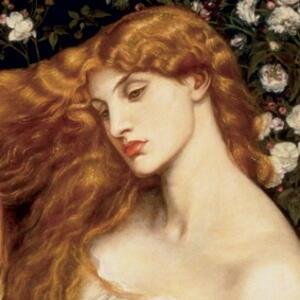In the tapestry of myth and folklore, few figures evoke as much intrigue and fascination as Lilith. From ancient Mesopotamian legends to modern pop culture, her enigmatic presence continues to captivate and inspire. Join us on a journey as we delve into the depths of Lilith’s story, unraveling her origins, exploring her symbolism, and examining her enduring cultural impact.
Who is Lilith?

Lilith is a figure from ancient Mesopotamian mythology and later Jewish folklore, often depicted as a female demon or night spirit. In Jewish tradition, she is portrayed as Adam’s first wife who rebelled against him, demanding equality. When Adam refused, Lilith left Eden, becoming a symbol of defiance and independence. Throughout history, interpretations of Lilith have varied, portraying her as both a seductive temptress and a symbol of feminine empowerment Her story continues to inspire fascination and serves as a potent symbol of power and rebellion in literature, art, and popular culture.
History of Lilith:
Lilith’s story spans millennia, tracing its roots back to ancient Mesopotamian mythology. In these early tales, Lilith is depicted as a powerful demon or night spirit known as “Lilitu,” associated with the desolate wilderness and the winds of chaos. Over time, Lilith’s story found its way into Jewish folklore, where she took on new dimensions as Adam’s first wife. According to some sources, Lilith’s refusal to submit to Adam’s authority led to her expulsion from Eden and her transformation into a malevolent figure.
Origins of Lilith:
In ancient Mesopotamian mythology, Lilith first appears as a female demon or night spirit known as “Lilitu.” These ancient tales depict Lilith as embodying the untamed wilderness and chaos of the night, portraying her as a powerful and independent force of nature. Over time, Lilith’s story migrated into Jewish folklore, where she became associated with Adam’s first wife and took on new layers of symbolism and meaning. Some interpretations suggest that Lilith’s rebellion against Adam’s authority symbolizes the struggle for autonomy and equality among women.
Symbolism of Lilith:
Lilith embodies a multitude of symbolic meanings, reflecting the fears, desires, and aspirations of humanity throughout history.In Jewish folklore, portrayals often depict her as a symbol of rebellion and defiance, as she challenges traditional patriarchal norms and asserts her own autonomy. Additionally, Lilith’s association with themes of sexuality, temptation, and the darker aspects of the human psyche makes her a complex and compelling figure in myth and legend. Some interpretations view Lilitu as a representation of the primal, untamed feminine energy that exists beyond societal constraints.
Cultural Impact of Lilith:
Lilith’s influence extends far beyond the realms of mythology and folklore, permeating various aspects of culture, literature, and art. From ancient religious texts to contemporary literature and film, her story continues to inspire countless interpretations and reinterpretations. Whether feared as a demonic temptress or revered as a symbol of female empowerment, Lilith’s legacy endures, inviting us to confront our deepest fears and desires. Examples of Lilith’s cultural impact include her portrayal in literature such as John Milton’s “Paradise Lost” and her appearance in popular culture through characters like Lilith Sternin in the TV show “Cheers” and Lilitu in the video game series “Diablo.”
Lilith: A Symbol of Power
Throughout history, Lilith has emerged as a potent symbol of power, challenging traditional notions of authority and gender roles. In Jewish folklore, Lilith’s defiance of Adam’s dominance positions her as a powerful figure who refuses to be subjugated. Her refusal to submit to Adam’s authority and her subsequent expulsion from Eden underscore her autonomy and independence.
Moreover, Lilith’s association with the night, darkness, and the primal forces of nature further accentuates her power. She embodies the untamed, wild aspects of the feminine psyche, symbolizing a raw, unbridled energy that defies societal constraints. In this sense, Lilith represents a potent archetype of female empowerment, inspiring women to embrace their inner strength and assert their autonomy.
In contemporary culture, Lilitu continues to resonate as a symbol of power and rebellion. Lilith’s portrayal in literature, art, and media often presents her as a formidable force, whether depicted as a seductive temptress or a fearsome demoness. Her power remains undeniable, serving as a rallying point for those challenging authority and asserting their own agency.
In conclusion, Lilith stands as a powerful symbol of autonomy, defiance, and feminine power. Her story serves as a reminder of the strength and resilience of the human spirit, inspiring individuals to embrace their inner power and forge their own path in the world.
Conclusion:
As we conclude our exploration of Lilith, the enigmatic queen of the night, let us reflect on the enduring power of myth and the timeless allure of mystery. Whether viewed as a symbol of rebellion, a force of darkness, or a champion of female autonomy, Lilitu continues to fascinate and intrigue, reminding us of the complexity and richness of the human experience.
FAQs
Who is Lilith?
Lilith is a figure from ancient Mesopotamian mythology and later Jewish folklore. She is often depicted as a female demon or night spirit.
What is Lilith’s role in Jewish folklore?
In Jewish tradition, Lilith portrays herself as Adam’s first wife, rebelling against him and demanding equality. When Adam refused, Lilith left Eden, becoming a symbol of defiance and independence.
What are some interpretations of Lilith?
Lilith has been interpreted in various ways throughout history. Some see her as a seductive temptress, while others view her as a symbol of feminine empowerment and autonomy.
How does Lilith continue to influence culture today?
Lilith’s story continues to inspire fascination and serves as a potent symbol of power and rebellion in literature, art, and popular culture. She remains a timeless enigma, inviting exploration of human desires, fears, and aspirations.
What are some examples of Lilith in popular culture?
Lilith has appeared in various forms in literature, art, and media. John Milton’s “Paradise Lost” features her, and she appears as lilitu Sternin in “Cheers” and in the “Diablo” series.





